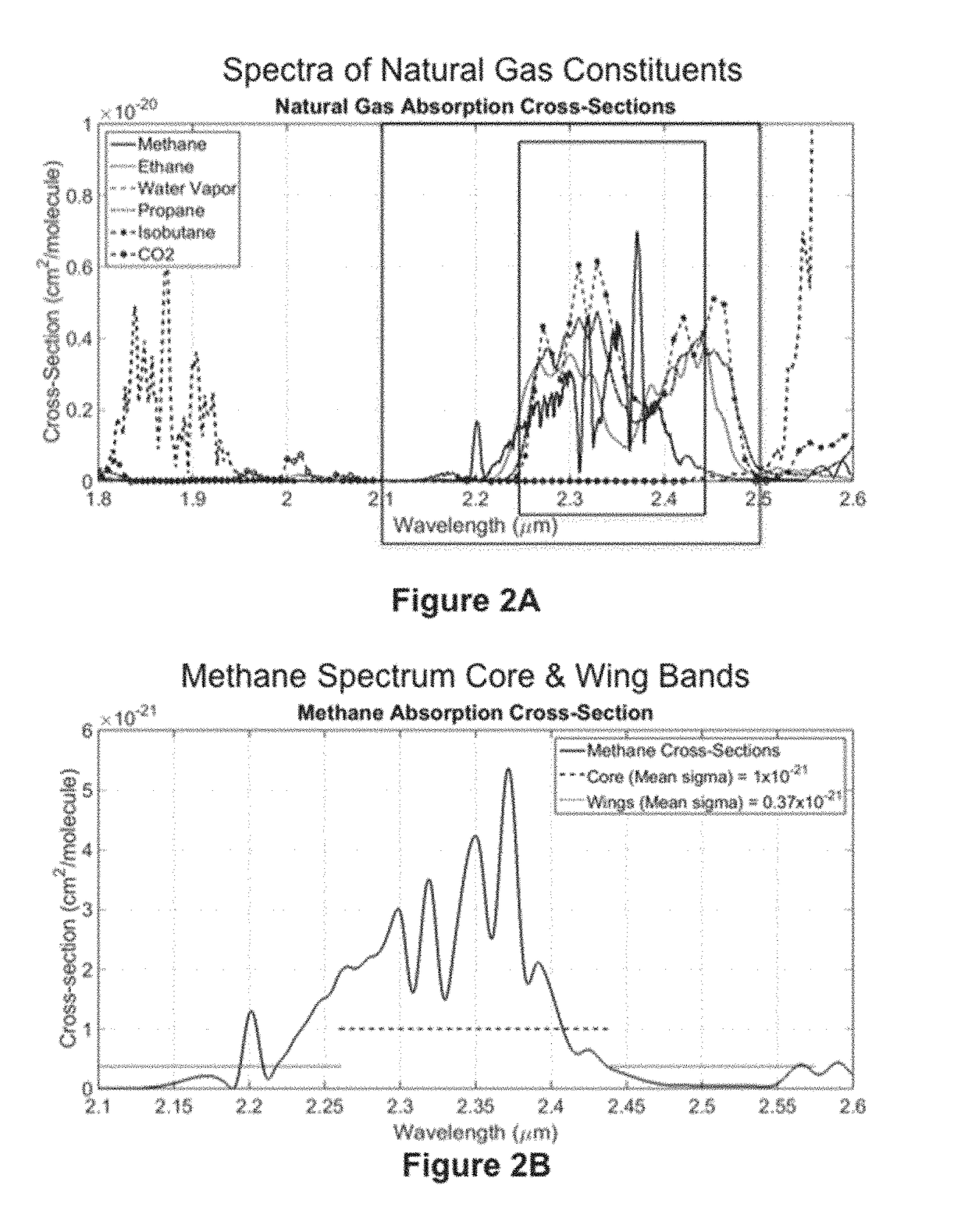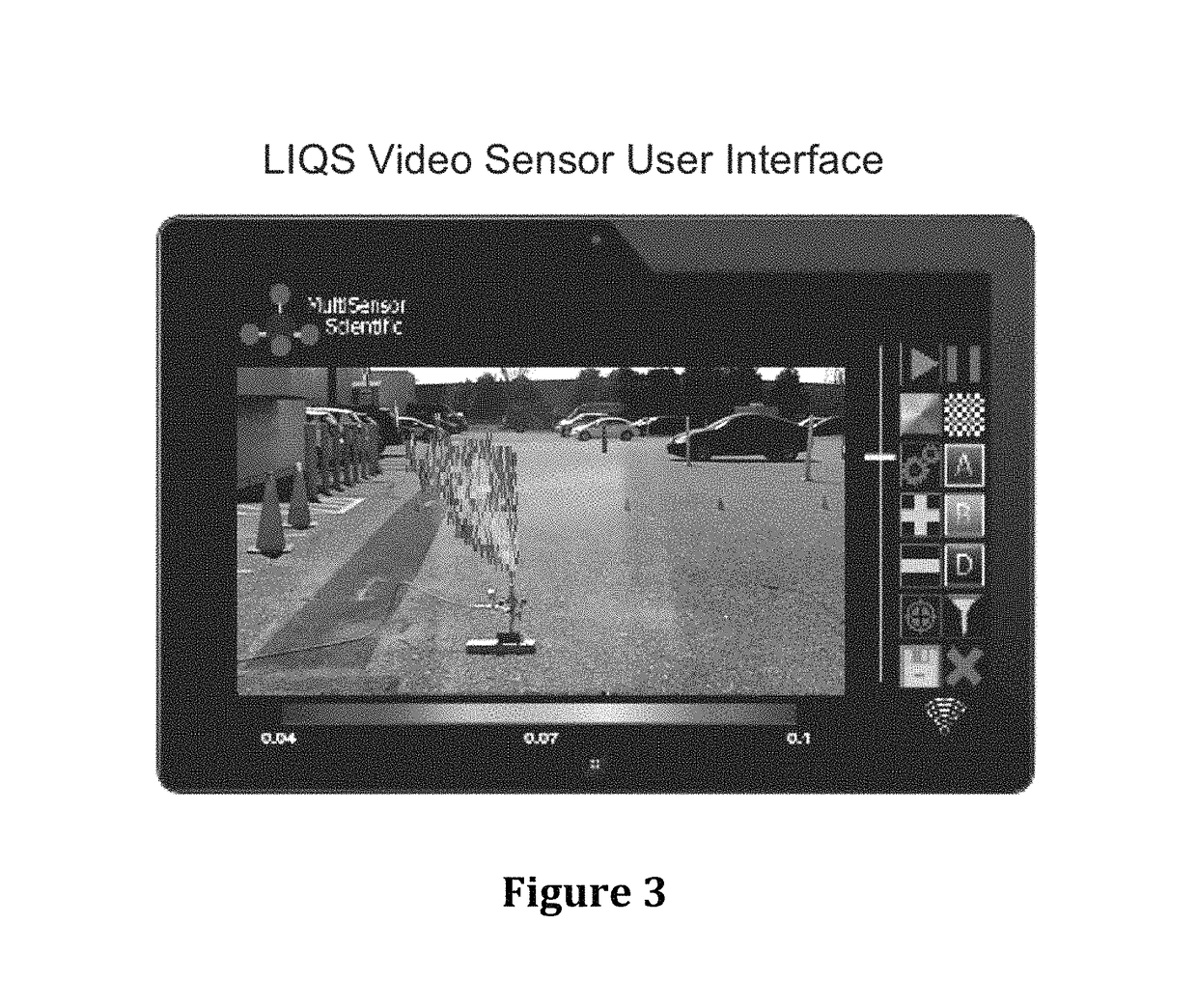Hydrocarbon leak imaging and quantification sensor
a technology of hydrocarbon leak imaging and quantification sensor, which is applied in the direction of optical radiation measurement, instruments, spectrometry/spectrophotometry/monochromator, etc., can solve the problems of health hazards, requiring direct sampling in place, and creating both safety and environmental hazards
- Summary
- Abstract
- Description
- Claims
- Application Information
AI Technical Summary
Benefits of technology
Problems solved by technology
Method used
Image
Examples
Embodiment Construction
Principals of Gas Absorption Imaging
[0050]This invention detects gas leaks via differential absorption imaging spectroscopy in the range 1.0 to 2.6 microns, exploiting spectral features of hydrocarbons in the short-wave infrared (SWIR) region, primarily in the wavelength range of 2.0 to 2.5 microns. These wavelengths are not typically associated with those in the thermal emission regions of the mid-wave infrared (MWIR) and long-wave infrared (LWIR) for objects at terrestrial temperatures. Appreciable thermal emission at around 2.0 microns requires objects at temperatures of around 1000° C. Instead, this invention relies on illumination sources like natural sunlight and lamps of color temperature near 1000° C. Thus, the invention can detect hydrocarbons at the same temperatures as their backgrounds by using external illumination instead of thermally emitted light.
[0051]The principals underlying non-thermal infrared multispectral imaging of a gas leak are shown in FIG. 1A. SWIR radiat...
PUM
| Property | Measurement | Unit |
|---|---|---|
| wavelength range | aaaaa | aaaaa |
| length | aaaaa | aaaaa |
| width | aaaaa | aaaaa |
Abstract
Description
Claims
Application Information
 Login to View More
Login to View More - R&D
- Intellectual Property
- Life Sciences
- Materials
- Tech Scout
- Unparalleled Data Quality
- Higher Quality Content
- 60% Fewer Hallucinations
Browse by: Latest US Patents, China's latest patents, Technical Efficacy Thesaurus, Application Domain, Technology Topic, Popular Technical Reports.
© 2025 PatSnap. All rights reserved.Legal|Privacy policy|Modern Slavery Act Transparency Statement|Sitemap|About US| Contact US: help@patsnap.com



